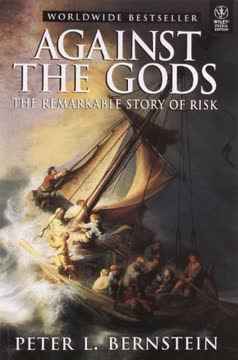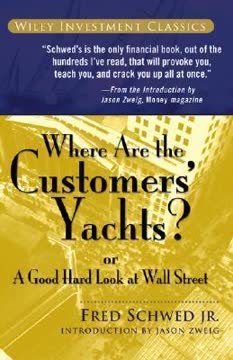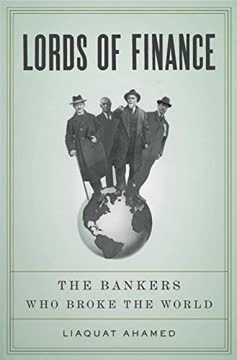Key Takeaways
1. Financial Bubbles Follow a Predictable Psychological Pattern
"Speculation often develops in two stages. In the first, sober, stage households, firms and investors, respond to a shock in a limited and rational way; in the second, the anticipations of capital gains play an increasingly dominant role in their transactions."
Stages of Financial Bubbles. Financial bubbles typically emerge through a predictable psychological progression. Initially, investors respond rationally to economic opportunities, but gradually become consumed by speculation and the anticipation of future gains. The transition from rational assessment to euphoric speculation is a recurring pattern in financial markets.
Key Characteristics of Bubble Development:
- Initial rational response to economic opportunities
- Gradual shift towards speculative thinking
- Increasing focus on potential capital gains
- Detachment from fundamental economic values
- Growing investor enthusiasm and risk-taking
Historical Context. The book provides numerous examples of this pattern, from the Dutch Tulip Bubble in 1636 to modern stock market manias. Each bubble follows a similar trajectory, demonstrating the consistent psychological mechanisms that drive market irrationality.
2. Credit Expansion Fuels Speculative Manias
"Virtually every mania is associated with a robust economic expansion, but only a few economic expansions are associated with a mania."
Credit as Catalyst. The expansion of credit plays a crucial role in fueling speculative manias. When credit becomes readily available and financial institutions become less risk-averse, investors are more likely to engage in speculative behavior. This credit expansion creates a positive feedback loop that drives asset prices to unsustainable levels.
Mechanisms of Credit Expansion:
- Relaxation of lending standards
- Increased availability of financial instruments
- Emergence of new financial innovations
- Reduced perception of risk
- Psychological momentum of easy credit
Systematic Nature. The book emphasizes that credit expansion is not random but a systematic process driven by economic conditions, institutional changes, and psychological factors. The growth of credit creates an environment where speculation can flourish.
3. Irrational Exuberance Drives Market Euphoria
"Speculation for capital gains leads away from normal, rational behavior to what has been described as a 'mania' or a 'bubble.'"
Psychology of Market Euphoria. Markets are driven not just by rational calculation but by collective psychological dynamics. During periods of euphoria, investors become increasingly detached from fundamental economic values, creating a self-reinforcing cycle of speculation and price inflation.
Characteristics of Irrational Exuberance:
- Collective optimism
- Belief in perpetual growth
- Disregard for traditional valuation metrics
- Increasing risk-taking
- Momentum-driven investment strategies
Psychological Mechanisms. The book explores how individual rationality can transform into collective irrationality, highlighting the complex interplay between individual decision-making and market-wide sentiment.
4. International Contagion Spreads Financial Crises
"Financial crises are major both in size and in effect and most are international because they involve several different countries either at the same time or in a causal sequential way."
Interconnected Global Markets. Financial crises are not isolated events but interconnected phenomena that spread across national boundaries through various transmission mechanisms like trade, capital flows, and psychological contagion.
Channels of Contagion:
- Arbitrage in commodity and security markets
- Capital flow dynamics
- Psychological spillover effects
- Trade interconnections
- Currency exchange mechanisms
Global Economic Dynamics. The book demonstrates how financial crises can rapidly spread across countries, challenging the notion of independent national economic systems.
5. Fraudulent Behavior Increases During Economic Booms
"The supply of corruption increases in a procyclical way much like the supply of credit."
Fraud as Economic Phenomenon. Economic booms create environments that are conducive to fraudulent behavior. As euphoria increases and regulatory scrutiny decreases, individuals and institutions become more likely to engage in unethical financial practices.
Characteristics of Boom-Time Fraud:
- Increased risk-taking
- Reduced ethical standards
- Complex financial innovations
- Exploitation of market enthusiasm
- Psychological rationalization of misconduct
Systemic Implications. The book reveals how fraudulent behavior is not merely an individual moral failure but a systemic response to economic conditions.
6. Market Crashes Are Inevitable and Cyclical
"A crash is a collapse of the prices of assets, or perhaps the failure of an important firm or bank."
Inherent Market Volatility. Financial markets are characterized by cyclical patterns of expansion and contraction. Crashes are not anomalies but inherent features of economic systems driven by human psychology and credit dynamics.
Crash Characteristics:
- Sharp decline in asset prices
- Loss of market confidence
- Potential failure of financial institutions
- Widespread economic disruption
- Psychological panic
Historical Perspective. The book documents numerous historical examples of market crashes, emphasizing their recurring nature across different economic contexts.
7. Government Intervention in Financial Crises is Complex and Controversial
"There are times when rules and precedents cannot be broken; others, when they cannot be adhered to with safety."
Policy Dilemmas. Responding to financial crises involves navigating complex moral and economic trade-offs. Government interventions can prevent immediate economic collapse but may create long-term moral hazard.
Intervention Challenges:
- Balancing immediate stability with long-term consequences
- Managing moral hazard risks
- Determining appropriate intervention levels
- Addressing systemic economic vulnerabilities
- Maintaining market confidence
Policy Complexity. The book highlights the nuanced decision-making required during financial crises, rejecting simplistic one-size-fits-all approaches.
8. Speculation and Market Psychology Trump Rational Expectations
"The rational expectations assumption is that investors react to changes in economic variables as if they are always fully aware of the long-term implications of these changes."
Limitations of Rational Choice Theory. Traditional economic models assume rational decision-making, but real-world markets are driven by complex psychological mechanisms that often deviate from rational calculations.
Psychological Market Dynamics:
- Herd behavior
- Emotional decision-making
- Cognitive biases
- Momentum-driven investment
- Collective irrationality
Theoretical Implications. The book challenges conventional economic thinking by emphasizing the role of human psychology in market behavior.
9. Asset Price Bubbles Are Systematically Related Across Countries
"These asset price bubbles were systematically related. The bubble in Japan resulted from three decades of rapid increases in real estate prices."
Global Financial Interconnectedness. Asset price bubbles are not isolated national phenomena but part of complex, interconnected global financial systems with systematic relationships and transmission mechanisms.
Bubble Interconnection Factors:
- Capital flow dynamics
- Technological and financial innovations
- Psychological contagion
- Monetary policy interactions
- Cross-border investment patterns
Systemic Perspective. The book reveals how bubbles in different countries are often linked through sophisticated financial and psychological mechanisms.
10. Moral Hazard Complicates Crisis Management
"The moral hazard problem is that policy measures undertaken to provide stability to the system may encourage speculation by those who seek exceptionally high returns."
Risk and Intervention Paradox. Government interventions designed to prevent economic collapse can create perverse incentives that increase future financial instability by reducing market participants' perception of risk.
Moral Hazard Dynamics:
- Reduced individual risk calculation
- Potential for increased speculative behavior
- Systemic risk amplification
- Erosion of market discipline
- Complicated policy trade-offs
Institutional Challenges. The book explores the delicate balance between providing economic stability and maintaining market accountability.
Last updated:
FAQ
What's Manias, Panics, and Crashes about?
- Historical Analysis: Manias, Panics, and Crashes by Charles P. Kindleberger provides a comprehensive history of financial crises, detailing patterns and causes over the past four centuries.
- Economic Behavior Focus: The book emphasizes the irrational behaviors of investors during economic euphoria, leading to speculative bubbles and subsequent crashes.
- Lessons from History: Kindleberger draws lessons from past crises to inform current economic practices, helping readers anticipate and mitigate future financial instability.
Why should I read Manias, Panics, and Crashes?
- Understanding Financial Systems: The book is essential for understanding the dynamics of financial markets and the recurring nature of financial crises.
- Timely Relevance: Given the frequency of financial crises, Kindleberger's analysis remains highly relevant for analyzing current economic conditions.
- Rich Historical Context: The book is well-researched, filled with historical examples, and provides a deeper appreciation for the complexities of financial systems.
What are the key takeaways of Manias, Panics, and Crashes?
- Cycle of Crises: Kindleberger outlines a cyclical pattern of financial crises characterized by euphoria, panic, and crash.
- Role of Credit Expansion: The expansion of credit is a primary driver of financial manias, fueling speculative behavior.
- Historical Lessons: Learning from past crises is crucial to prevent future ones, emphasizing the importance of historical context.
What are the best quotes from Manias, Panics, and Crashes and what do they mean?
- "Manias, panics, and crashes...": This quote highlights that financial crises are shaped by public perception and discourse.
- "The cycle of manias...": It underscores the critical role of credit in financial markets, suggesting that easy credit leads to crashes.
- "The lessons of history...": Emphasizes the importance of historical context in understanding financial systems and avoiding past mistakes.
How does Manias, Panics, and Crashes define speculative manias?
- Definition: Speculative manias are periods where asset prices rise dramatically due to investor enthusiasm, often detached from economic fundamentals.
- Psychological Factors: Euphoria and herd behavior contribute to manias, with investors buying assets in anticipation of selling at higher prices.
- Historical Examples: Kindleberger provides examples like the South Sea Bubble, illustrating similar patterns of behavior and market dynamics.
What role does credit play in financial crises as discussed in Manias, Panics, and Crashes?
- Credit Expansion as Catalyst: The expansion of credit is a primary driver of financial manias, fueling speculative investments.
- Impact on Behavior: Easy access to credit encourages risk-taking, creating a feedback loop of rising prices and further borrowing.
- Consequences of Contraction: When credit tightens, it can lead to widespread defaults and financial crises, highlighting the dangers of over-leveraging.
How does Manias, Panics, and Crashes explain the concept of contagion in financial crises?
- Definition of Contagion: Contagion refers to the spread of financial crises from one market or country to another, often due to interconnected systems.
- Mechanisms of Contagion: Kindleberger outlines mechanisms like trade links and capital flows that facilitate the spread of crises.
- Historical Examples: Instances like the Asian Financial Crisis illustrate how a crisis in one country can trigger instability across a region.
What is the role of a lender of last resort according to Manias, Panics, and Crashes?
- Crisis Management: A lender of last resort provides liquidity during crises to prevent bank runs and stabilize the economy.
- Preventing Panic: Timely intervention can restore confidence in the financial system, mitigating panic effects.
- Moral Hazard Concerns: The existence of a lender of last resort can lead to riskier behavior by banks, believing they will be bailed out.
How does Manias, Panics, and Crashes address the concept of moral hazard?
- Definition: Moral hazard is the risk of engaging in risky behavior because the party does not bear the full consequences.
- Impact on Stability: Government interventions can create an environment where institutions take excessive risks, expecting rescue.
- Need for Balance: Kindleberger argues for balancing support during crises with ensuring accountability for financial institutions.
What historical examples does Manias, Panics, and Crashes use to illustrate financial crises?
- The South Sea Bubble: An early 18th-century crisis exemplifying speculative excess leading to market collapse.
- The Great Depression: Analyzed for its contributing factors and lessons learned, highlighting the need for effective regulation.
- Japanese Asset Price Bubble: Discussed for insights into causes and consequences of asset price inflation in the late 1980s.
How does Manias, Panics, and Crashes suggest preventing future financial crises?
- Regulatory Frameworks: Advocates for stronger measures to monitor and control speculative activities in financial markets.
- Education and Awareness: Emphasizes educating investors about speculation risks and bubble signs.
- Historical Awareness: Understanding past crises helps anticipate and mitigate future financial instability risks.
How does Manias, Panics, and Crashes relate to modern financial markets?
- Relevance to Current Events: The book's analysis provides insights into modern market dynamics, including the 2008 crisis.
- Cautionary Tales: Past crises serve as warnings for contemporary investors and policymakers to recognize potential crises.
- Framework for Analysis: Concepts and frameworks can be applied to analyze current financial trends and behaviors, informing better decision-making.
Review Summary
Manias, Panics, and Crashes receives mixed reviews. Some praise it as a classic on financial history, offering valuable insights into economic cycles and crises. Readers appreciate Kindleberger's analysis of common features in bubble cycles and his non-US-centric approach. However, many find the book dense, poorly organized, and repetitive. Critics note its academic tone and lack of clear narratives. While some consider it essential reading for investors and economists, others struggle with its complexity and dry writing style. The book's historical examples and analysis of financial disasters are generally well-regarded.
Similar Books
Download PDF
Download EPUB
.epub digital book format is ideal for reading ebooks on phones, tablets, and e-readers.











